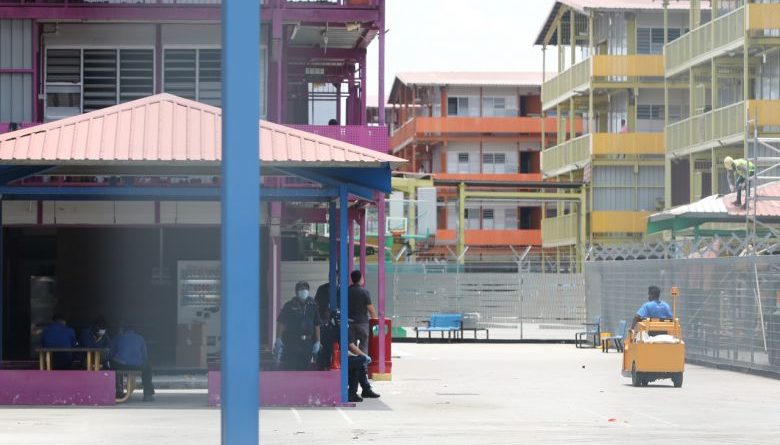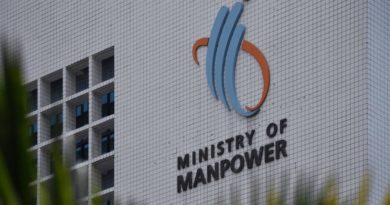COVID-19 “The 2019 Plague” Day 152: SINGAPORE- 931 new cases, of which 15 are S’poreans and PRs; experts say too early to say S’pore has turned corner
SINGAPORE – The number of new Covid-19 cases on Sunday (April 26) went back up to nearly 1,000, reversing the downward trend over the past few days.
The Health Ministry (MOH) confirmed 931 new cases as of noon, bringing the total number of confirmed cases to 13,624.
The vast majority of the new cases are work permit holders in foreign worker dormitories. Fifteen are Singaporeans and permanent residents.
This is even as experts say that it will take at least a week of sustained decline in local community cases, which excludes migrant workers, before Singapore can say that it has turned the corner.
.


SPACE RESERVE FOR ADVERTISEMENT.
The latest numbers on Sunday reined in any optimism that Singapore may be beginning to see some early signs of the infection curve flattening.
On Saturday, nine community cases were confirmed, marking the first time numbers have dropped to the single digits this month.
.


SPACE RESERVE FOR ADVERTISEMENT.
Numbers at dormitories also dropped to 597, down from about an average of a thousand daily in the five days before.
This followed a generally downward trajectory since the middle of last week.
Experts told The Straits Times that the slide in community cases needs to be sustained until at least the first week of May, and even then, the clusters at dormitories may remain a challenge.
Dr Leong Hoe Nam, an infectious diseases expert from Mount Elizabeth Novena Hospital, said he would like to see fewer than five local cases daily in the coming week, and then several days of zero transmissions in the first week of May.
.


SPACE RESERVE FOR ADVERTISEMENT.
“Only then would I say we are truly out of the woods. We realised that all you need is a tiny spark in the right setting and it can blow up, so even one new case is one too many,” he said.
Similarly, Professor Wang Linfa, director of the emerging infectious diseases programme at the Duke-NUS (National University of Singapore) Medical School, said one to two weeks of continuous data is needed to make sure the “trend is real”.
.


SPACE RESERVE FOR ADVERTISEMENT.
He gave May 10 as a benchmark date, explaining that this is both due to the incubation period of the coronavirus, which averages 14 days, and to account for the effect of social distancing measures.
Associate Professor Hsu Li Yang, who leads the infectious diseases programme at NUS’ Saw Swee Hock School of Public Health, said at least a week of below 10 new cases a day would be a sign that Singapore is on the right track, as the virus’ serial interval – how fast it spreads from person to person – is between three to five days.
But Professor Paul Tambyah at NUS’ Yong Loo Lin School of Medicine said the numbers of cases are hard to interpret without knowing how many people are tested.
The MOH also monitors and collects data on severe pneumonia and influenza-like illnesses from polyclinics and general practitioners, he noted.
“When (both of) these are down significantly, perhaps close to zero, then we can be confident that we have turned the corner,” he said.
.


SPACE RESERVE FOR ADVERTISEMENT.
The experts also cautioned that the recent dip in Covid-19 numbers among migrant workers is no cause for celebration, attributing it to reduced testing at some dormitories.
Dr Leong, Prof Hsu and Prof Tambyah all cited Professor Dale Fisher, chair of infection control at the National University Hospital, who spoke about a shift in diagnostic criteria at the dormitories during a CNA interview on Saturday.
“The numbers are not really coming down. It’s a function of the tests. In some of the dormitories the infection rate or the positivity rate of the tests is so high, you get to the point where you don’t need to test anymore,” said Prof Fisher.
He added that instead, those with clinical respiratory illness in such sites are almost certain to have Covid-19, and are placed into isolation straightaway.
.


SPACE RESERVE FOR ADVERTISEMENT.
ST has contacted the authorities for more information.
Agreeing with Prof Fisher, Dr Leong said the strategy will “save lives and save resources”, but also artificially suppress numbers.
In the same vein, Prof Hsu said: “Certainly, the intervention to move some of the workers out will enable physical distancing measures to be implemented properly at a few of the dormitories, but also numbers will fall as we do less testing, and will not reflect true numbers at the dormitories.”
.

All photographs, news, editorials, opinions, information, data, others have been taken from the Internet ..aseanews.net | [email protected] | Fo r comments, Email to : Al Bulario











